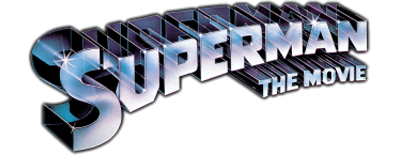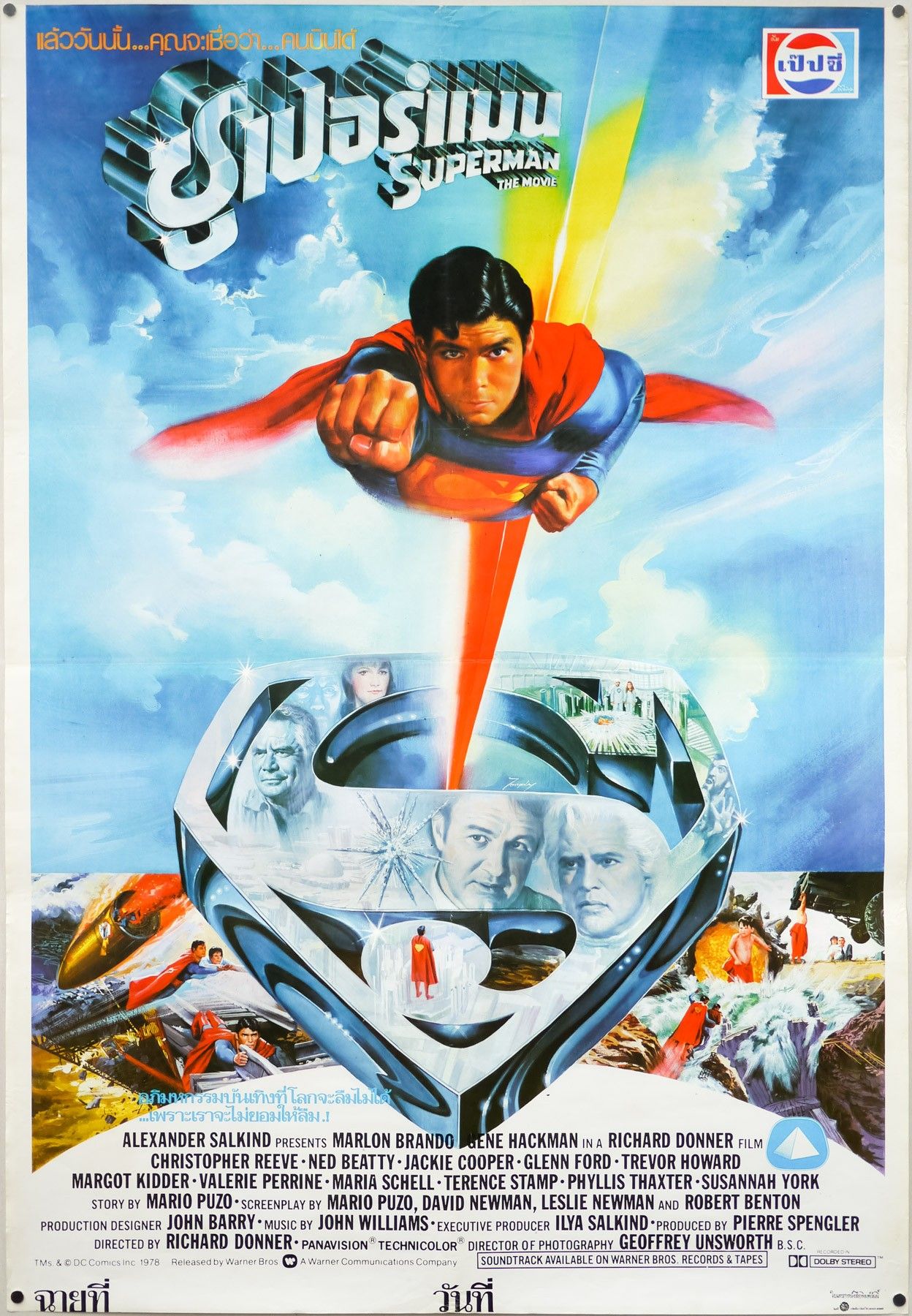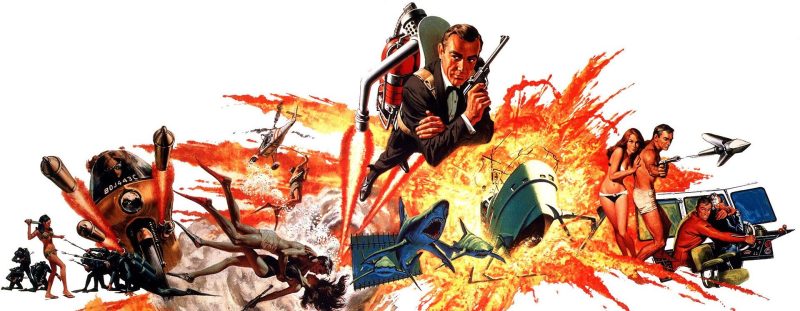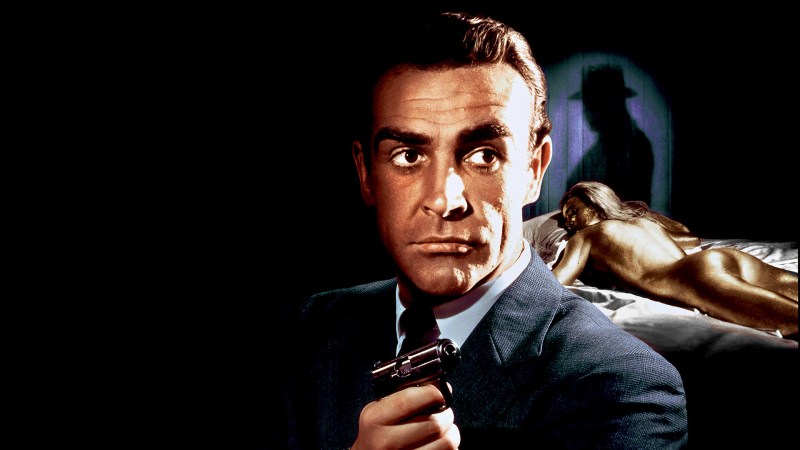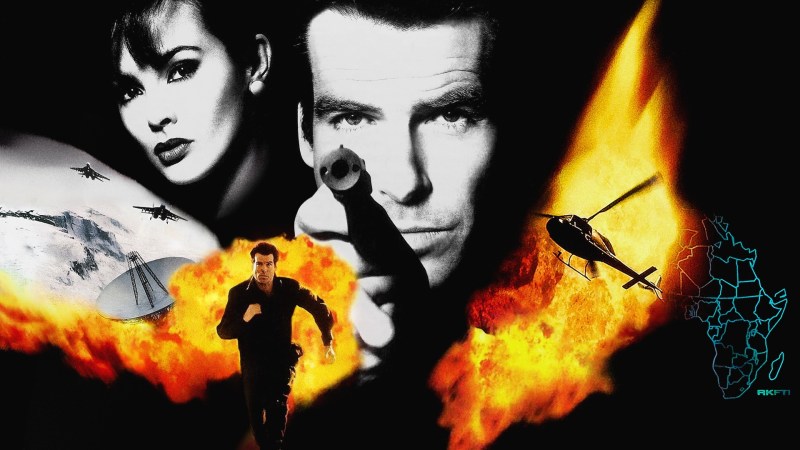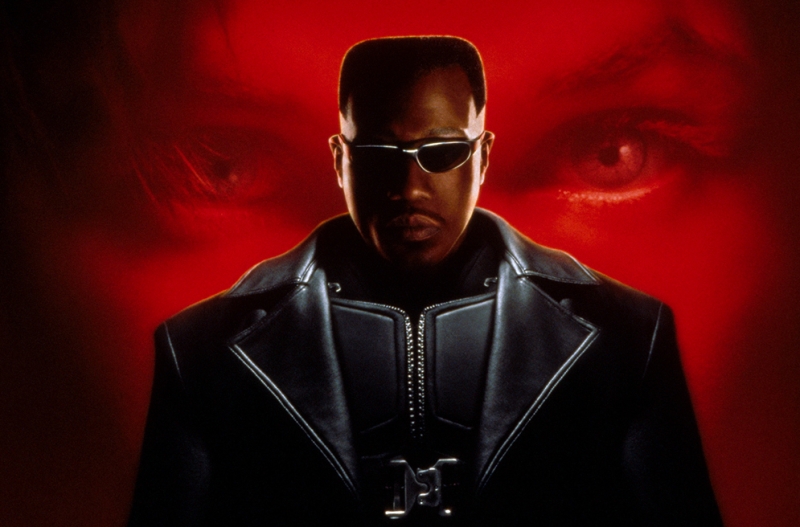
Is it a bird? Is it a plane? Or is it the character who put the modern superhero movie on the commercial map?
Superhero films are the linchpin of modern popular cinema. In the last twenty years, we have seen big-budget blockbusters that have made Batman, Wonder Woman, and the Marvel superhero gallery into multi-billion-dollar brands. Each new release is an event, pulling in a broad cross-section of people that includes parents, kids, comic-book geeks young and old, and even the average moviegoer out for a good time. They have their detractors like Martin Scorsese, but there is no denying their cultural impact. The Marvel Cinematic Universe is the biggest selling film franchise in the history of cinema, far outperforming legendary mainstays like Star Wars and James Bond. But it wasn’t the House That Stan Lee Built that blazed the trail for superheroes on the big screen. That honor goes to the Man of Steel.
Many superhero movie fans might be too young to remember, but there was a time when superheroes didn’t make for great film entertainment. The Superman and Batman movie serials of the 1930s and 40s were strictly for kids, and kids back then didn’t ask much of their entertainment. The costumes looked cheap, the special effects were poor, and the actors were certainly not the buff, energetic people we see today. Think beer bellies and flabby arms in a polyester suit with giant stitches; that’s what you had to work with. And so it went for decades. Any time Hollywood took on a superhero project, it generally turned into a campy, colorful mess played for laughs. 1966’s Batman with Adam West and Burt Ward comes to mind.

Then along came Alexander and Ilya Salkind. This father and son film producing team had been successful in Europe with several projects over the years, and in 1974 they hit upon the idea of making a film about America’s most popular superhero, Superman. The Salkinds, along with French producing partner Pierre Spengler, purchased the rights from DC Comics, which was (and still is) owned by Warner Bros. Studios. The producers wanted to make a serious science-fiction/fantasy epic that would detail the origin of the Man of Steel and his epic battle with archenemy Lex Luthor. They secured a negative pick-up deal with Warner Bros. to produce two films back-to-back.
For those not in the know, a negative pick-up deal means that the producer makes the picture, incurs all the production costs, then delivers the film negative to a distributor, who then buys the film outright and markets and releases it, with the profits being split between the producer and the distributor. The Salkinds set about going after big names to bring their vision to life. Bestselling author Mario Puzo, hot off his Oscar-winning screenwriting work on The Godfather and The Godfather II, was hired to write the script. He produced a 500-page brick that included many of the core elements that would become Superman the Movie and Superman II. David and Leslie Newman and Robert Benton were brought in to tame the length and tone down what the Salkinds felt was a high level of camp. Just the same, Puzo’s work added legitimacy to the project, giving the Salkinds the muscle they needed to go after other big names.
Among the names considered for director were James Bond’s Guy Hamilton, The Exorcist director William Friedkin, The Wild Bunch’s Sam Peckinpah, and Richard Lester, who had directed the Salkinds’ The Three Musketeers and The Four Musketeers. George Lucas and Steven Spielberg were also considered, but Lucas was already in pre-production on Star Wars and Spielberg was committed to finishing what Ilya called “that fish movie of his.” Friedkin turned down the job, and Peckinpah was removed from consideration when he showed up with a gun to a meeting with Salkind. Hamilton was interested, but he had to turn down the job because it would be shooting in England and he was a tax exile at the time. Alexander Salkind saw The Omen and suggested Richard Donner, who recalls being offered the job over the phone while he was on the toilet. He was paid $1 million to direct Superman I & II. One of his first decisions was to bring on screenwriter Tom Mankiewicz to polish the scripts and make them suitable for shooting.

The Salkinds also entertained several ideas for casting. They secured Marlon Brando early to play Superman’s father, Jor-El, paying the notoriously difficult actor $3.7 million for 12 days’ work, plus a healthy share of the profits. It was a record-setting deal at the time, and future fantasy film producers would undoubtedly curse Brando for raising the salary bar so high for actors. Gene Hackman was reluctant to take on the role of Lex Luthor, fearing that it would tarnish his work as a serious actor. He changed his mind after Donner signed on to direct. Casting Superman was a major challenge. Every big name in Hollywood was considered at one point or another, including Robert Redford, Burt Reynolds, Clint Eastwood, James Caan, Jon Voigt, Christopher Walken, and Nick Nolte. Bruce Jenner was approached at one point, and Muhammad Ali was also considered. Casting proved difficult because Superman was really two roles: the muscular, athletic, confident Man of Steel and the bumbling, clumsy, unassuming Clark Kent. Casting guru Lynn Stalmaster, who had casted numerous Hollywood classics over the years, suggested little-known actor Christopher Reeve. The Salkinds didn’t warm to Reeve, but Donner was convinced the moment he saw Reeve audition.
Is that how a warped brain like yours gets its kicks? By planning the death of innocent people?
Superman
Reeve would later say that he was initially unsure of how he would make such an iconic character work on screen without looking silly. “So I decided what I would do is let the costume do most of the work. This film went way beyond anything that had been done before in terms of special effects. The technology that was developed really made me look credible. That made it easier for me to underplay the part. Don’t do too much. Don’t pose. Don’t try to come across as larger than life.” As for the Man of Steel’s alter ego, Reeve pictured Clark Kent as a modern-day Cary Grant, bumbling and well-meaning with an added slight stutter. Several actresses auditioned for the role of Lois Lane, including Leslie Ann Warren and Anne Archer, but Margot Kidder’s on-screen chemistry with Reeve was undeniable, and she won the part.

With all the pieces in place, shooting for both Superman I & II began in the fall of 1977. It was the largest production budget for a film to that time, and it was an epic shoot, lasting 19 months and deploying 11 units across three continents. Filming multiple franchise films concurrently is relatively common now, as it can save costs in the long run, and it allows producers and distributors to keep the product coming before audiences have a chance to lose interest. But Superman practically invented the concept. By the time it was in principal photography, Star Wars: A New Hope was already a worldwide phenomenon, raising the bar for special effects to bold new heights. Donner feared whether Superman’s flying effects would be up to the challenge, realizing that if they couldn’t make it look realistic, then the movie would be sunk. Years of work and millions of dollars went into making audiences believe a man could fly. Wire-work, gimbals, blue screens, animation, miniatures, every trick in the book was used to put Superman in the sky. For the period, it worked great, and for years afterwards the special effects used to make Superman fly were treated as a closely guarded secret, adding an aura of mystery and magic that thrilled audiences.
The film itself is broken into three sections, each with its own tone. The opening sequences on Krypton are bright and clear, almost as if we are being given a peek into Valhalla or Mount Olympus. The look and feel are unlike any world previously imagined on screen, where the technology is thousands of years beyond our own, and even the clothing glows with a supernatural hue. The second section focuses on young Clark Kent’s life in Smallville. It is like an Andrew Wyeth painting come to life, with gentle earth tones and soft music. Life is simple, bucolic, and we can see the influence that this wholesome world will have on Clark and how it infuses his sense of purpose and moral clarity. The last, and largest segment of the film is when Clark Kent comes to Metropolis. It is chaotic, dirty, and fast-paced, setting up the film for the introduction of Superman and his conflict with Lex Luthor.

Beyond the core cast of Brando, Hackman, Reeve, and Kidder, the movie is packed with familiar faces from the era that gives Superman an epic quality. Terence Stamp and Sarah Douglas as Zod and Ursa, Susannah York as Lara, Glenn Ford and Phyllis Thaxter as Pa and Ma Kent, Jackie Cooper as Perry White, Ned Beatty as the delightfully dim Otis, Valerie Perrine as the fetching Miss Teschmacher, and so on. There is even a cameo by Kirk Alyn and Noel Neill as young Lois Lane’s father and mother. Alyn played Superman in 1940s film serials and Neill played Lois Lane in the 1950s television series The Adventures of Superman. These cameos were part of a scene that is one of many that didn’t make it into the theatrical release of the film, but did appear in later versions. While Clark Kent is a teen in Smallville, he gets into a race with a speeding locomotive. His super speed is spied by one of the train’s young passengers, who tells her mother that a man is racing the train. Her mother tells her, “Oh Lois Lane, you have a writer’s gift for invention.”
[having been offered a glass of wine] Uh, no, no thanks. I never drink when I fly.
Superman
A longer version of the film was presented on television years later that included other gems like Superman saving Miss Teschmacher from being fed to lions by Lex Luthor after she helps him escape, more scenes of Superman doing heroic deeds after the H-bomb-induced earthquake, and more scenes of life in Smallville. While there have been multiple releases of various cuts of Superman the Movie over the years, I don’t believe there has ever been one complete edition that includes all the scenes shot and produced for the film. Part of the reason for this is the nature of the deal the Salkinds made to get Superman produced. The film production was almost destined to go over budget from the beginning. Donner never received a production budget or schedule, so he was perpetually behind schedule, which made for a rough relationship between the director and the producers. Along the way, the Salkinds sold a larger chunk of their post-release film rights to Warner Bros. in order to get financial assistance to finish the picture. This gave Warners theatrical and later home video distribution rights to the film. When the television rights reverted to the Salkinds, they put together a three-hour version that added close to 45 minutes of footage not seen theatrically. Subsequent television and cable airings would slice and dice the film to accommodate advertising slots and broadcast schedules, lending the perception that nobody would ever see the same version of Superman the Movie twice.

The other reason for multiple versions of the film had to do with the production schedule. With Superman I & II being filmed simultaneously, the schedule quickly got away from the producers. Warner Bros. insisted on having something to release in theaters by Christmas 1978. They had already blown a potential release date of April 1978, which would have coincided with the 40th anniversary of Action Comics #1, the first appearance of Superman in the comics. The decision was made to wrap principal photography in October. All of Superman the Movie and a large chunk of Superman II were already filmed, but it would be up to Donner, his editors, the special effects team, and music genius John Williams to have the movie ready for Christmas. They operated around the clock, and there was no time to give Superman a preview.
Superman the Movie hit theaters on December 15, 1978, and it was by all accounts an absolute smash. It set multiple box office records for opening day, opening weekend, and holiday releases. It was also the biggest hit in Warner Bros. history to date. It was the second highest grossing film of 1978 behind Grease, taking in $134,000,000 domestically and $300,000,000 worldwide. Those were blockbuster numbers for the time. Critics were also on board, giving the film rave reviews for its special effects, its story, and acting. The film received three Oscars for film editing, sound, its musical score, and a Special Achievement Academy Award for visual effects. British Academy Awards, Golden Globes, Hugo and Saturn science fiction awards all followed. The Salkinds were inspired to get back to work and finish Superman II, but not before a knockdown, drag-out fight with Donner would irrevocably change the sequel. But that is another story.
The success of Superman the Movie proved that superhero films could be done seriously without insulting or disappointing the audience. Filmmakers and studios would soon be inspired to rummage through moldy old comic book collections to visit other properties and measure their viability for the big screen. It would take some time to get the formula right, but once the balance between drama and fantasy could be properly measured, a new genre would be destined to take over motion pictures.
Director: Richard Donner
Screenplay: Mario Puzo, David Newman,
Leslie Newman & Robert Benton
Music: John Williams
Cinematography: Geoffrey Unsworth
Editing: Stuart Baird & Michael Ellis


